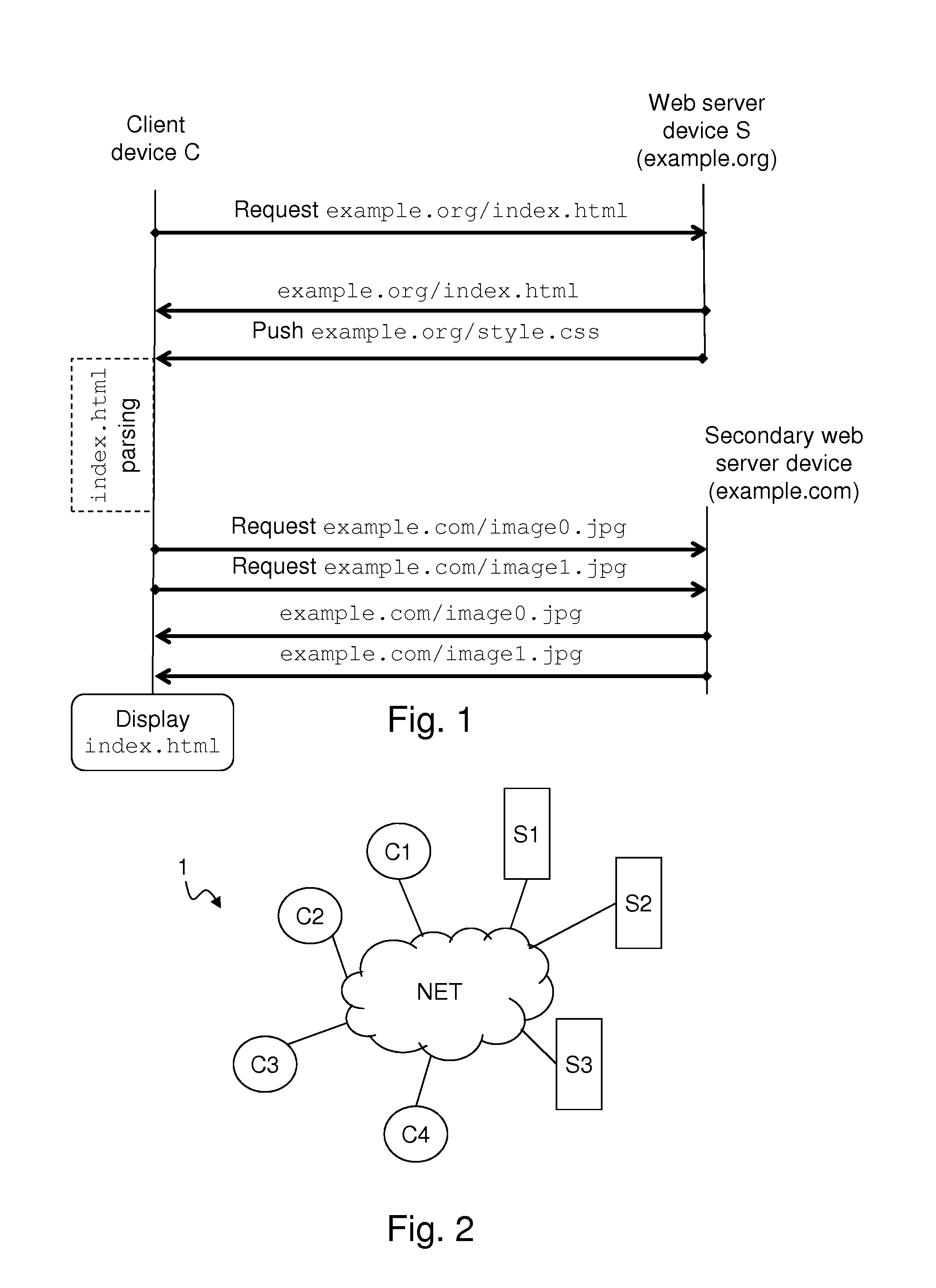Method, system and server device for transmitting a digital resource in a client-server communication system
a communication system and client-server technology, applied in the field of network communication, can solve the problems of unable to push the two image resources, and reducing the service life of the server and client device, so as to reduce the consumption of network bandwidth and processing time, speed up the subsequent loading and possible display, and save time
- Summary
- Abstract
- Description
- Claims
- Application Information
AI Technical Summary
Benefits of technology
Problems solved by technology
Method used
Image
Examples
Embodiment Construction
[0085]The invention provides methods and devices for transmitting digital resources in a client-server communication system. An exemplary application is the Internet where the well-known HTTP protocol is client-server based to provide digital resources such as web pages.
[0086]A typical web client-server communication system 1 is shown in FIG. 2, in which embodiments of the invention may be implemented.
[0087]It comprises a communication network NET such as an IP-based local or wide area network (LAN, WAN) and a plurality of web server devices Si that offer IP-based services, such as web sites. Consequently, each web server device Si hosts digital resources in internal storage memories and can provide them to any requesting party.
[0088]Generally, a requesting party is a client device Ci as shown in the Figure, which client device implements a web browser through which a user interacts and that generates and sends HTTP requests to the web server devices.
[0089]The same device of the cli...
PUM
 Login to View More
Login to View More Abstract
Description
Claims
Application Information
 Login to View More
Login to View More - R&D
- Intellectual Property
- Life Sciences
- Materials
- Tech Scout
- Unparalleled Data Quality
- Higher Quality Content
- 60% Fewer Hallucinations
Browse by: Latest US Patents, China's latest patents, Technical Efficacy Thesaurus, Application Domain, Technology Topic, Popular Technical Reports.
© 2025 PatSnap. All rights reserved.Legal|Privacy policy|Modern Slavery Act Transparency Statement|Sitemap|About US| Contact US: help@patsnap.com



